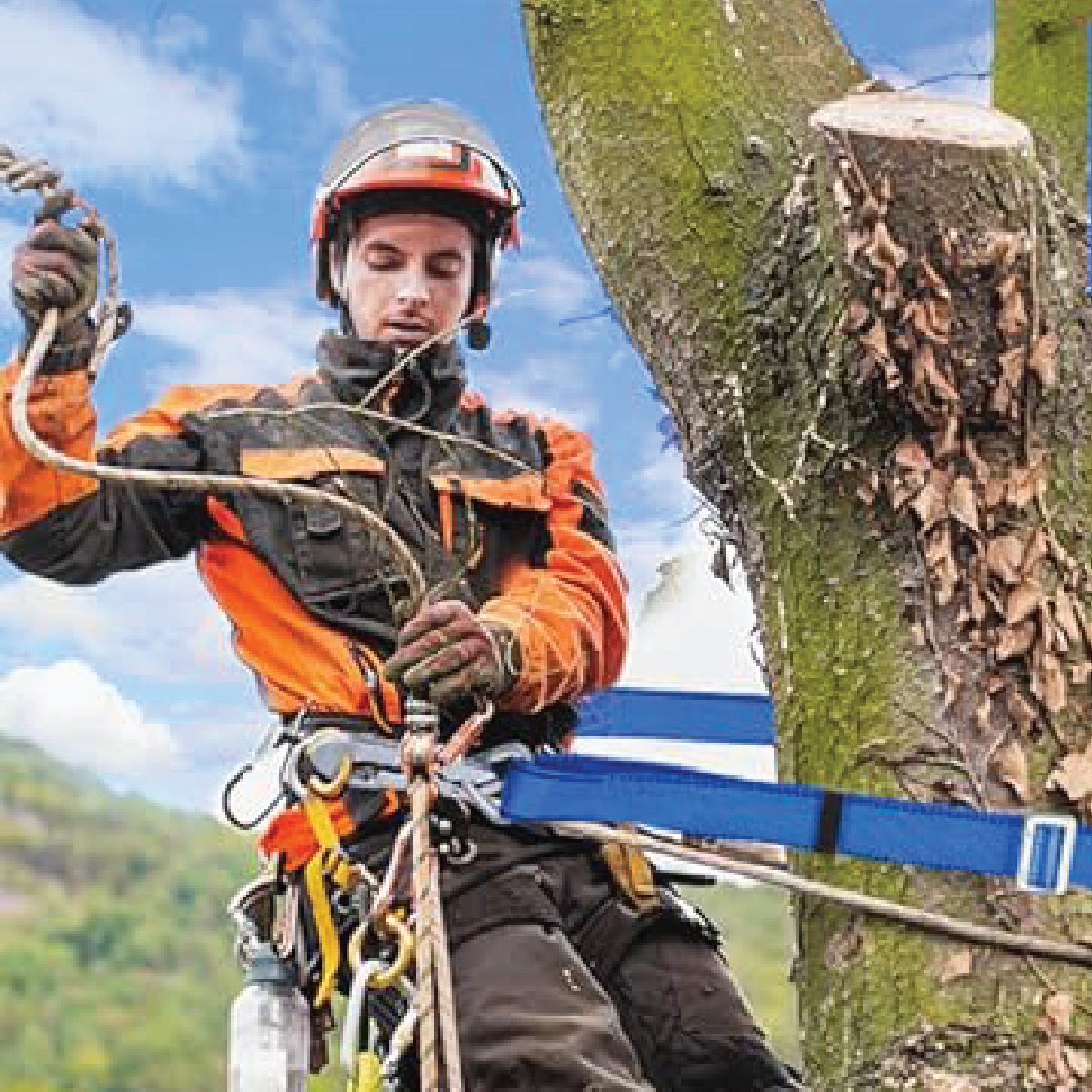Pathway
Arborist
Arborists provide professional tree care. They use rigging to ascent trees. Youth Apprentices plant trees and shrubs inspect trees and shrubs and perform pruning cuts.
Length of Apprenticeship: One or two years

Job Competencies
Year 1: Youth apprentices must complete a total of 11 competencies. Ten must be from the list below. If necessary, employers can substitute 1 competency with another occupationally appropriate skill. That skill should be added to the competency list for assessment.
Year 2: Youth apprentices must complete a total of 10 competencies. Nine must be from the list below. If necessary, employers can substitute 1 competency with another occupationally appropriate skill. Those skills should be added to the competency list for assessment.
Tool Note: Youth apprentices cannot start or use chainsaws or chippers.
-
YEAR 1 Competencies
- Inspect, maintain, and use appropriate personal protective equipment (PPE)
- Inspect vehicles and towed units
- Conduct a basic tree inspection
- Establish a safe work zone
- Inspect the following equipment in accordance with American National Standard (ANSI Z133) Safety Requirements for Arboricultural Operations
- Install work positioning lines from the ground
- Ascend the tree
- Descend from tree
- Retrieve all gear
- Prepare to chip
- Perform pruning cuts
-
YEAR 2 Competencies
- Identify common deciduous trees and shrubs
- Identify common conifer trees and shrubs
- Identify signs and symptoms of common damaging insects/mites
- Identify signs and symptoms of common diseases
- Use a rigging system to lower the load directly to the ground
- Maneuver through canopy
- Prepare the chainsaw for others to use
- Perform chainsaw field maintenance
- Demonstrate a natural pruning
- Perform pruning of shrubs
Related Instruction
Students must enroll in 1 High School Credit or 3 College Credits of related instruction each year they participate in the Youth Apprenticeship program.
Purpose of Related Instruction
The purpose of choosing a related instruction course is to ensure students are learning technical and academic skills that support the student's ability to perform their work tasks. This should be done concurrently with on-the-job training to make relevant connections between learning competencies and work.
Choosing Related Instruction
You will collaborate with your YA Coordinator and School Counselor to determine the most appropriate option for related instruction. A course within your high school directly related to the career pathway is ideal, especially if dual credits and/or hours related to a potential registered apprenticeship are offered.
If there is not a directly related course in your school district, related instruction in the same career cluster is also acceptable.
If there is not a course within that career cluster in your school district, you may request to register for a college course through the Start College Now program with a local technical college, Early College Credit from a local university, or from an alternative provider such as Destinations Career Academy.
-
- Agronomy and Soil Science
- Horticulture
- Plant Science
- Greenhouse Management
- Landscape Design and Management
- Sustainable Agriculture
- Business or Consumer Math
- Statistics
- Technical Math or Math for the Trades
- Oral/Interpersonal Communication
- Speech
- Technical Writing & Communication
- Written Communication
- Computer Literacy
- Computer Science
- Career Development/Employability Skills
- Entrepreneurship or Intro to Business
- Independent Living
- Leadership and Civic Engagement Courses
- Personal Financial Literacy or Consumer Economics
-
- Intro to Horticulture
- Intro to Soils
- Organic Soils
- Nutrients & Composting
- Hydroponic Growing & Systems
- Crops and Soil
-
- Green Design & Technology
Post Secondary
There are numerous opportunities to continue your education after completing the Youth Apprenticeship program.
Registered Apprenticeships
The Arborist pathway can bridge into a registered apprenticeship as Arborist
College and University
- Major in Agriculture, Food and Natural Resources at the Universities of Wisconsin.
- Enroll in the Agriculture, Food and Natural Resources program at the Wisconsin Technical College System.
